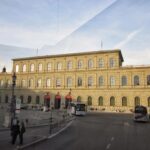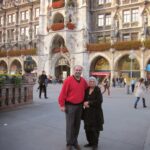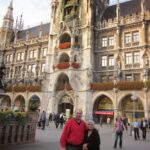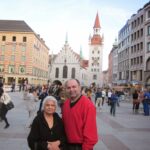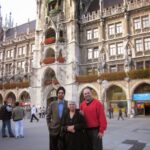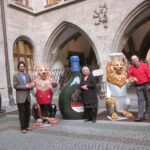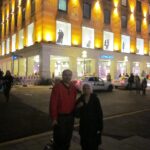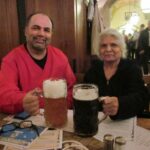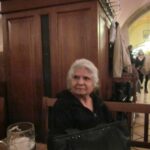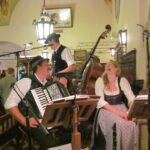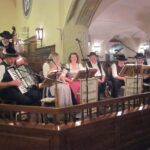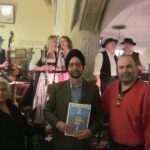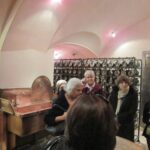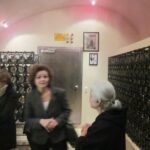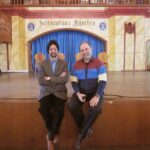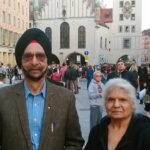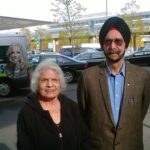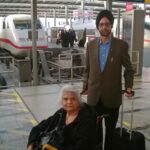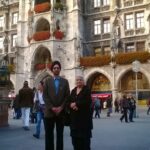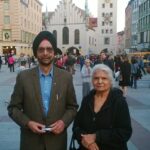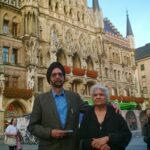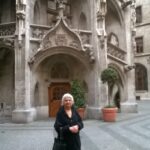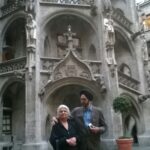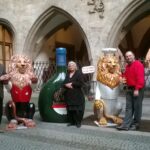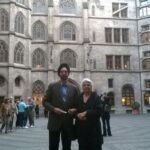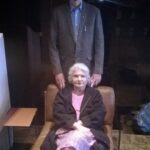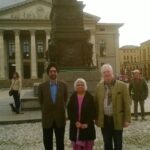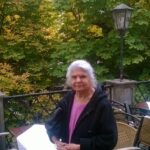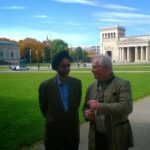Having seen Second World War events as a child, my elder son Baljit Singh Vohra(aka Dobin) took me and my Late wife Sardarni Jasbir Kaur Vohra (aka Guddi) to visit places in and around Munich connected with Hitler and Nazis.
Munich
The Bavarian capital of Munich held a special place for the Nazis. it was the Capital of the Movement – the birthplace of the Nazi Party. Throughout the Third Reich period, Munich remained the spiritual capital of the Nazi movement, with headquarters buildings, museums to house the forms of artworks approved by Adolf Hitler, and shrines to the attempted Nazi putsch in November 1923. These sites were used as the scenes of lavish annual memorial ceremonies, and swearing-in ceremonies for new SS members.
With its banks, factories and business centres, Munich may at first appear staid and stable. But the city has a volatile past, especially during the years when Hitler and his Nazi Party began their first violent grabs for power. From the beer halls where he gathered his supporters to the Town Hall where Goebbels inaugurated with an unhinged speech.
There are far too many buildings in Munich to see but I am illustratinf a few of them which were connected with Hitler and his Nazi Party.
Hitler’s Beer Halls
Considering Hitler was notoriously a teetotaller, it is surprising to learn that the Nazis actually got their start in some of Munich’s most famous beer halls. At least one of these historic institutions is still standing. The Hofbräuhaus am Platzl was an early gathering place for Hitler and his supporters, where the alcohol only inflamed their misguided opinions.
Königsplatz: Nazi Party Buildings
On the square known as Königsplatz, or “King’s Square,” there are numerous Nazi Party buildings that look much the same today as they did during Hitler’s time. The Führerbau and the Ehrentempel are two of the most notable, but certainly not the only sites worth discovering.
The first is the building where Hitler had his offices. This building is most famous for being the location where Hitler signed the peace agreement with Neville Chamberlin, which supposedly guaranteed “peace in our time.” Today the building hosts the University of Music and Performing Arts Munich.
The second building Ehrentempel was originally two temple sites constructed by the Nazis in the 1930s. These were destroyed by advancing American armies, though today there is a plaque on the site.
Old Town Hall in 1872
Munich’s Old Town Hall is one of the most impressive buildings in the centre of the city and it also played an important role in the Nazi’s seizure of power. This is the place where Joseph Goebbels gave the speech that inspired Kristallnacht on November 9, 1938. A programme against Jews throughout Germany, Kristallnacht led to the destruction of many Jewish-owned businesses and the arrest of thousands of Jewish citizens. Kristallnacht, or “the night of broken glass,” is generally considered the start of the Final Solution and the Holocaust.
Haus der Kunst – the House of Art
The ‘Gift Horse’ in the free-to-access Middle Hall of the Haus der Kunst
The ‘House of German Art’ was Nazi Germany’s first monumental building project. It was designed by architect Paul Ludwig Troost who did not live to see its opening ceremony in 1937. At the cornerstone ceremony in 1933 the newly self-proclaimed fuhrer announced that Munich was the “Capital City of German Art”. This building was designed to hold the work of the National Socialist Party’s ideologically approved artists. Still in use as an arts venue, it has recently been refurbished and hosts temporary exhibitions of contemporary artists.
PLEASE CLICK ANY PICTURE TO SEE ENLARGE VIEW
